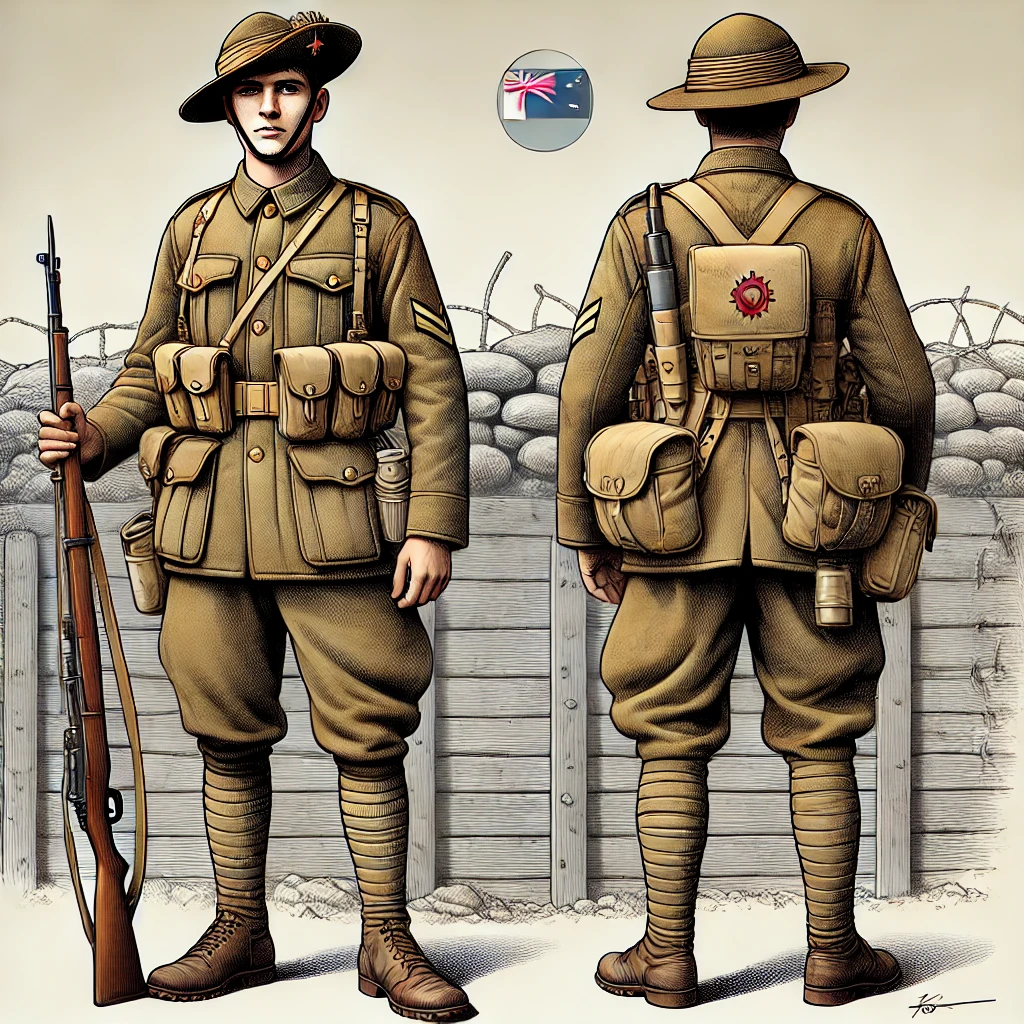
Australian World War 1 uniform
Published on Jan 29, 2025
Australian World War 1 Uniform: A Iconic Military Attire
During World War 1, Australian soldiers were called "Diggers." They wore a special uniform that made them stand out on the battlefield. Designed for durability and practicality, the uniform played a crucial role in protecting soldiers while also reflecting Australia’s military identity. Let’s take a closer look at what made up the standard attire of an Australian soldier in the Great War.
The Slouch Hat: A Symbol of Australian Identity
One of the most recognizable parts of the Australian uniform was the slouch hat. Originally adopted from the British military, this hat became an enduring symbol of Australian soldiers. The left side was often pinned up, allowing for better handling of rifles. Many soldiers adorned their hats with the Rising Sun badge, signifying their service in the Australian Imperial Force (AIF).
Khaki Drill and Woolen Tunics
The main component of the uniform was the khaki-colored tunic. Made of wool, it was designed to provide warmth in colder climates, particularly in the trenches of Europe. However, the thick material often made it uncomfortable in warmer conditions, such as those experienced during the Gallipoli campaign. The tunic featured four large pockets, brass buttons, and reinforced shoulder straps.
Trousers and Puttees
Australian soldiers wore khaki wool trousers, which were tucked into puttees—long strips of cloth wrapped around the lower legs. Puttees provided support, kept dirt and debris out of boots, and offered some protection against minor injuries. Though practical, they were time-consuming to put on and could become uncomfortable when wet.
Boots: The Foundation of the Uniform
The standard-issue boots were made of leather and built for durability. Given the harsh conditions in the trenches, maintaining boots was essential. Soldiers often received replacement pairs when theirs became too worn out, but shortages sometimes meant that men had to repair their own footwear.
Webbing and Equipment
Soldiers carried their gear using a webbing system, which included pouches for ammunition, a water bottle, an entrenching tool, and a bayonet. The webbing was designed for even weight distribution, ensuring soldiers could carry essential supplies without too much strain. A standard issue Lee-Enfield rifle was the primary weapon for Australian troops, known for its reliability and accuracy.
Greatcoats and Gas Masks
In winter, soldiers were issued thick woolen greatcoats for additional warmth. These long coats were bulky but necessary for surviving the freezing conditions on the Western Front.
As chemical warfare became more common, gas masks were also introduced. Early versions were simple and hard to use. However, they improved over time to offer better protection against deadly gases, like mustard gas.
The Rising Sun Badge: A Mark of Distinction
The Rising Sun badge was worn on the collar or hat and became a symbol of Australian military pride. The badge has a semicircular design with a crown in the center. It shows the link to the British Commonwealth and the fighting spirit of Australian troops.
Challenges and Modifications
The uniform, while functional, had its drawbacks. Soldiers at Gallipoli found the woolen fabric too heavy for the hot weather. Some altered their uniforms by removing sleeves or opting for lighter attire when possible..
In the muddy trenches of France, maintaining clean uniforms was challenging. Soldiers frequently donned additional items such as scarves and layers for warmth.
Legacy of the Australian WW1 Uniform
The World War 1 uniform left a lasting impression and influenced later military attire. The slouch hat is an important part of modern Australian military dress. It honors the legacy of the ANZACs.
About the Author
Nady is a historian and writer specializing in military history. With a passion for uncovering the stories behind historical artifacts, Nady has written extensively on World War 1 and the role of Australian forces in shaping modern military traditions.
